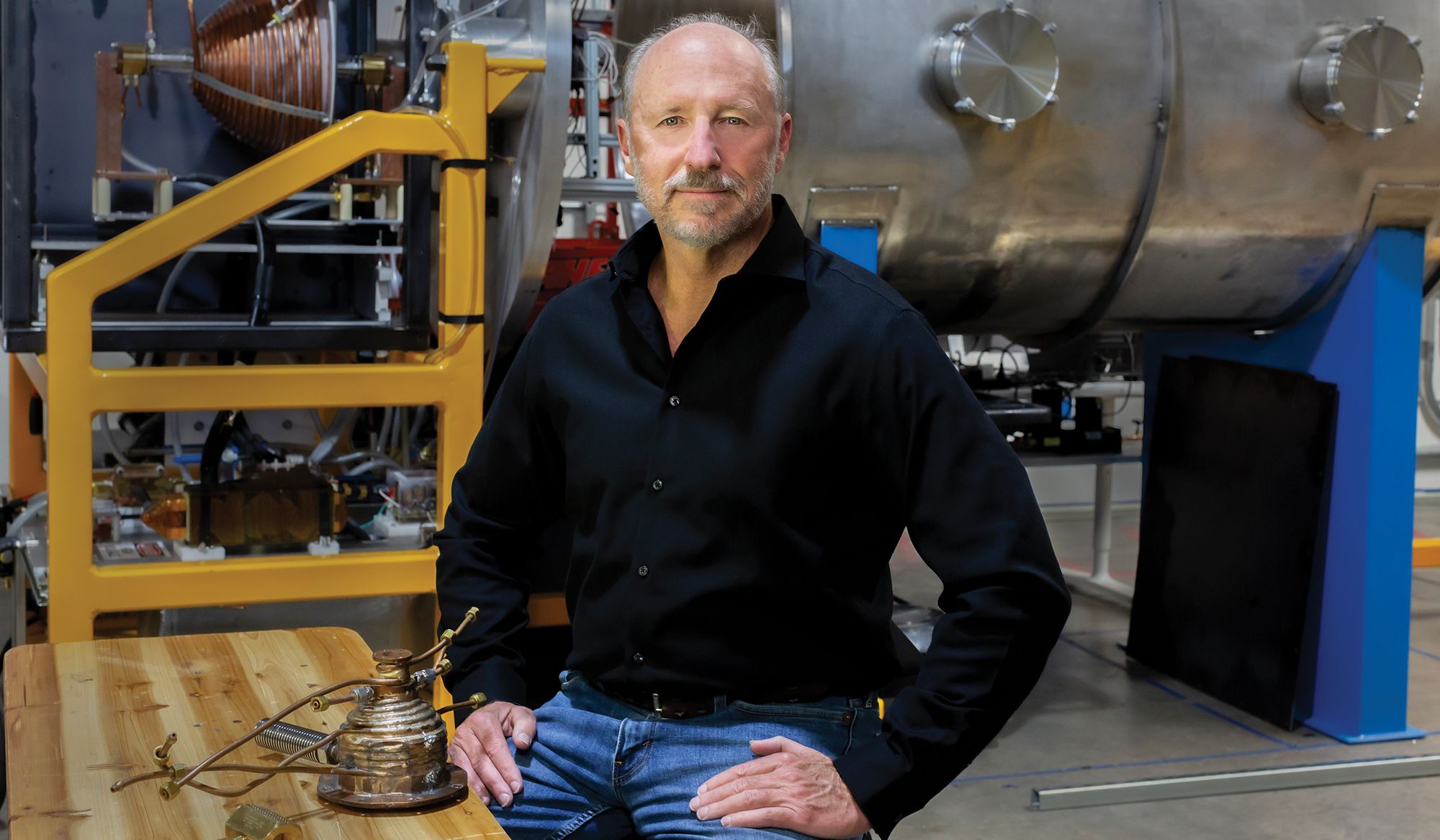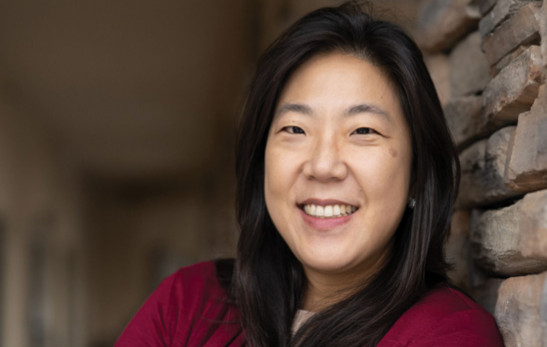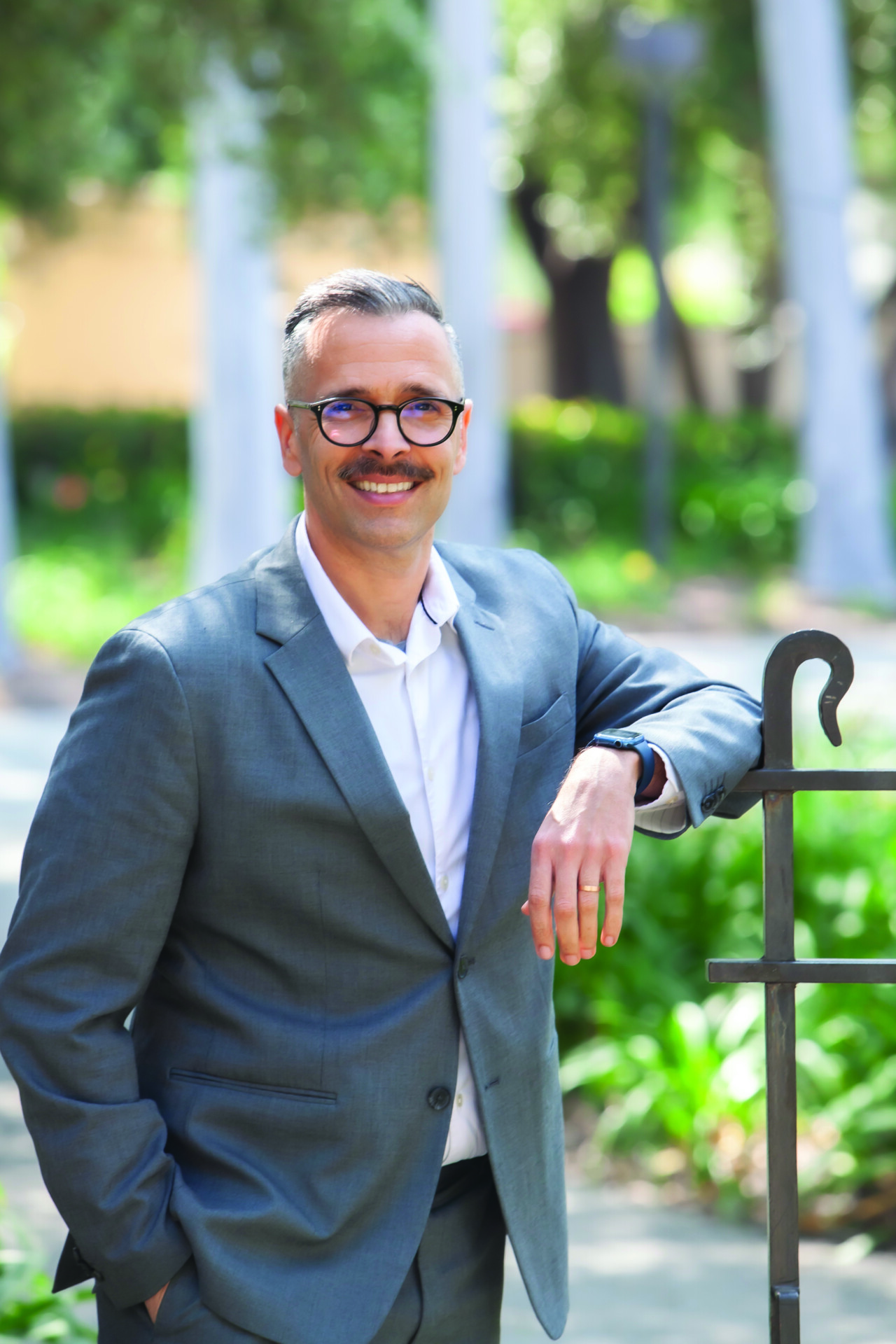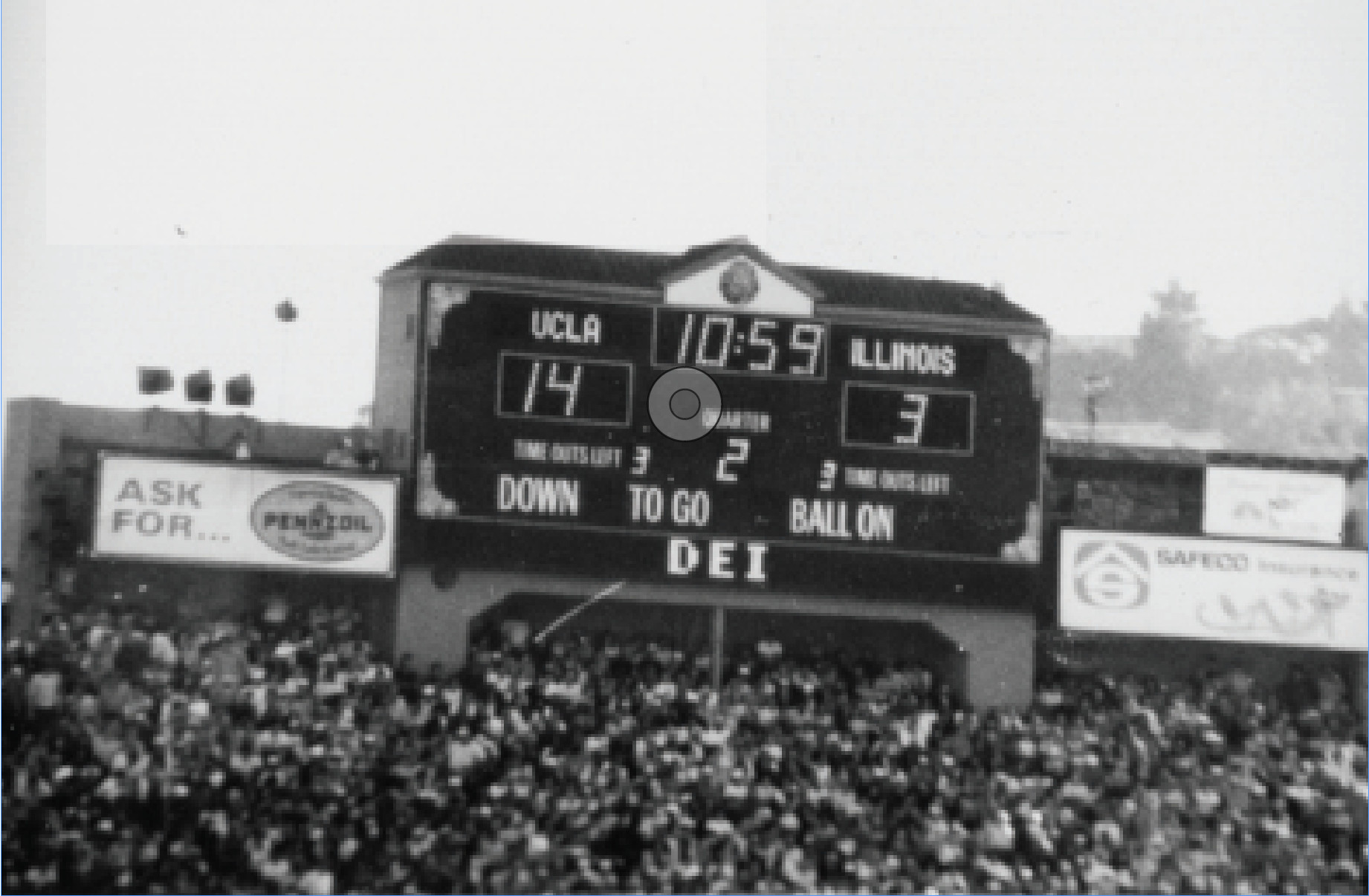Mining the Skies
Have Joel Sercel, PhD (MS ’87, PhD ’93) and TransAstra finally figured out how to unlock the promise of asteroid mining?
by Steven Boyd Saum

Until A Few Years Ago, the total number of satellites in orbit was just a few thousand. In the next decade, experts expect 100,000 satellites to be launched—the vast majority into low earth orbits. That sounds great, but today’s rockets are not well suited to getting these satellites into their proper orbits in space. Some need to be in higher orbits to extend their lives or view larger areas of the globe, while others need to be placed in orbits spaced around the Earth in ways that rockets are simply not good at doing.
“The trick to asteroid mining is to go after the relatively small asteroids, of which there are literally billions in the solar system,” says Sercel.
Joel Sercel, PhD (MS ’87, PhD ’93), who founded Trans Astronautica Corporation (TransAstra) in 2015 and serves as CEO, gets the problem. “It’s like you’re on a business trip, and the airplane drops you at the airport,” he says. “There’s no Uber to get you to your hotel. Today, spacecraft have to carry their own propulsion systems to get there. That would be like if you had to carry a bicycle on the airplane with you, and then pedal off to your Holiday Inn. That’s ridiculous.”
His solution? A hotel shuttle. “We’re putting in place a transportation system.”
TransAstra is developing the Worker Bee series of craft— small, medium, and large—part of a suite they call Apis. (That’s the genus of honey bees; it also stands for Asteroid Provide In-Situ Supplies.) They’ll serve as space tugs, pickups, or big rigs hauling cargo from a container ship—pick your metaphor. All are powered by a solar thermal engine called the Omnivore, which TransAstra has been testing at a facility in Colorado since last year. In June, they completed a new facility in Southern California known as the Hive, equipped with a pair of large vacuum systems with solar simulators.
Sercel has a deep background in space technology, with 14 years at the Jet Propulsion Laboratory and another 14 years teaching and conducting research at Caltech. With TransAstra, his team is developing technology not only to address the space logistics market—a multibillion dollar opportunity—but also to prepare for a future built around harvesting the resources of asteroids.
Both of these plans will be powered by the Omnivore, which is slated for space testing by the end of 2023. The engine earns its name because it is designed to be fueled by any volatile fluids—especially water—boiled by heat generated by lightweight solar-powered concentrators. Squeeze that gas out the back and you’ve got propulsion—similar to chemical rocket engines, only without the carcinogenic contents or the equivalent risk of explosion.
And because water is now known to be widely abundant in our solar system, TransAstra’s technology turns the vast majority of asteroids into potential refueling stations. Here’s how the mining works: a craft will encapsulate an asteroid in an inflatable bag, then use solar concentrators to generate heat for “Optical Mining”—breaking up the asteroid and collecting its valuable minerals while simultaneously driving water out of the excavated material and into another enclosing inflatable bag. First to be tested will be Mini Bee, which NASA is paying TransAstra to prototype. Full-scale, operational asteroid mining will begin with Honey Bee, one of its space tugs outfitted with mining equipment, which is about the same mass as a big pickup truck. Carried into orbit aboard, say, a SpaceX Falcon 9 rocket, it will use water propellant to travel to an asteroid about the size of a house and extract from it some 100 tons of water—enough to fill a small backyard swimming pool. Given the cost of sending water into orbit, “that 100 tons of water is worth about $1 billion in space,” Sercel says.
The ultimate asteroid mission vehicle is the Queen Bee, capable of harvesting an asteroid perhaps half the size of a football field and extracting a few thousand tons of water. When the Apis craft are able to harvest water to make rocket propellant, that in turn will bring down the cost of getting around in space. “It will actually make sense to harvest precious metal from those objects,” Sercel says. “The trick to asteroid mining is to go after the relatively small asteroids, of which there are literally billions in the solar system.” Just among the near earth asteroids—which are those that pass close to the earth’s orbit around the sun—there are about 1 billion that are one meter in diameter or larger. “We only know where about 30,000 of them are, which is why we’ve developed telescope technologies to find those little ones.”
To locate NEOs, TransAstra has developed what it calls the Sutter telescope system, designed to be low cost and high performance, and bringing together advanced software and electronics—including large numbers of fast-imaging optical systems. That enables what TransAstra calls “optimized matched filter tracking (OMFT)” to find thousands more small asteroids per year and determine their brightness and velocity in real time.
Hayden Burgoyne, PhD (MS ’12, PhD ’16) is the head of mission formulation at TransAstra. He recently came over from JPL, drawn by his long-held interest in asteroid mining. His interest is in both the virtue of the endeavor—resource extraction away from the planet we’re trying to steward—and the fascinating technical problems it poses. At TransAstra, he has been assisting Sercel with a lunch-and-learn series for colleagues that replicates the upper division and graduate level course Sercel taught. “It’s kind of the fundamentals of spacecraft design,” Burgoyne says, “Even as CEO, Joel is taking a professorial approach.”

“Joel always makes it seem like a surprise that some innovation has happened,” Burgoyne says. “Yet it’s happened so often, it can’t be an accident.”
— Hayden Burgoyne, PhD (MS ’12, PhD ’16)
Another dimension to the culture: “Joel always makes it seem like a surprise that some innovation has happened,” Burgoyne says. “Yet it’s happened so often, it can’t be an accident.” Burgoyne credits the flexibility and freedom team members have to come up with ideas. “But Joel also pushes us to move as quickly as we can. It’s the right crucible for generating new ideas.” That may be why TransAstra already has five patents issued and another 20 or so patent applications in the pipeline.
Those ideas have also turned heads, drawing investment from startup accelerator YCombinator and from private partners ready to put the Worker Bees to work. Constellations of satellites are needed to establish the internet in space—and serve increased GPS demand as more self-driving cars hit the streets back on earth, notes Nicole Shumaker, vice president of partnerships for TransAstra. Worker Bees can haul those satellites to where they want to be—into a higher geostationary orbit or even a lunar orbit. That allows for simpler satellite design and extends their mission life. “They don’t burn all their propellant trying to get into their final orbit,” Shumaker says.
The Sutter telescope system has also elicited keen interest from the U.S. Space Force. Deployed in cislunar space—between the moon and the earth—the system could play a key role in broader space domain awareness, including, Shumaker says, “traffic management, debris detection, and finding other celestial bodies that might pass through unexpectedly.” That includes objects like the meteor that hit Chelyabinsk, Russia, in 2013, as well as human-engineered objects launched by nations with less-than-friendly intent. And yet, like the rest of TransAstra’s projects, the system’s ultimate goal is pressing the boundaries of discovery and changing the relationship between humans and space.
To understand why Sercel is going where he is, it helps to understand where he comes from. He grew up in the Arizona desert, the son of an Air Force fighter pilot, watching his father blast into the wild blue yonder. He talks about the overview effect experienced by astronauts—that shift in awareness that comes from seeing Earth from space—as something he experienced early in life, gazing up into the clear night sky. “From an early age, we feel like denizens of the universe.” Earth is the starting point. But only the starting point. And mining asteroids is one more stop on the road.

Steven Boyd Saum is a writer and editor with more than 25 years experience. He is at work on a book about California and edits WorldView Magazine. For more than a decade he edited Santa Clara Magazine, winning CASE gold medals for writing, design, and overall excellence, and he established the magazine for The Commonwealth Club of California.
Related Articles
-

Transmission 2024
From the Board Chair of the Caltech Alumni Association
-

Meet the New Leader of Alumni Engagement
Following a national search, Mario Peraza, MEd, was named assistant vice president for alumni relations by Caltech, effective June 12,2024.
-

A Legendary Hack Turns 40
In this moment of Caltech mischief that required months of planning, students Ted Williams, PhD (BS ’84) and Dan Kegel (BS ’86) manipulated the sco...